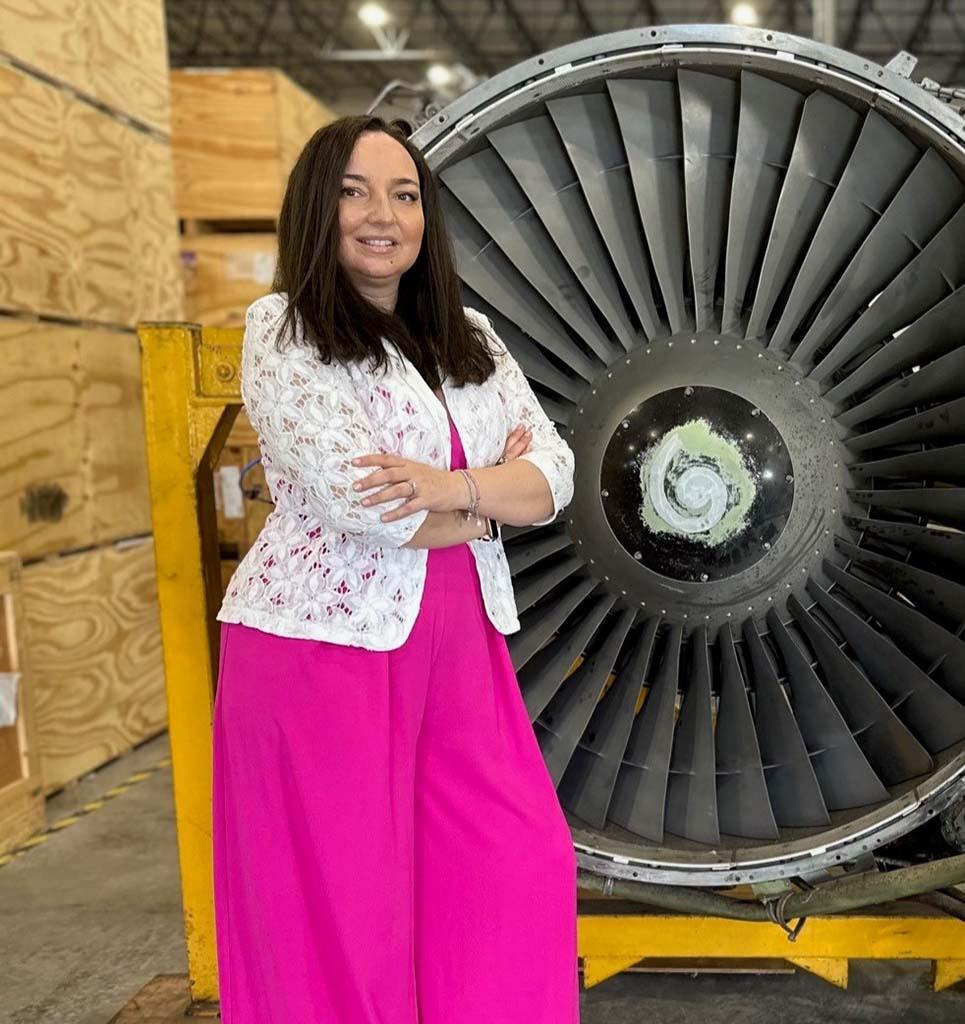
Aero Care CEO Anca Mihalache
Anca Mihalache became CEO of aviation parts and maintenance services provider Aero Care at the beginning of 2024. She spoke with Aviation Week Network about the company’s parts strategies and recent trends within the aftermarket supply chain.
What key trends are you currently seeing with airframe and engine parts?
Right now, it is a sellers’ market, and several companies are bidding on the few airframes and engines available. The “hot parts,” as we call them, are even harder to find and those that are available are at prices well in excess of the pre-COVID rates of 2019. Adding to this already difficult trading environment, we are just entering the peak season for airlines, so there will be even higher demand for already scarce parts during the summer period. This will be followed by the high season for the MROs in a few months, when we believe that distributors are really going to struggle to support demand.
This means that buyers need to be very connected to the market, be able to make purchasing decisions quickly, be able to keep inventory at a minimum level and avoid being under stocked—it can be a difficult balancing act to achieve.
The outlook for MRO repairs and overhauls is getting brighter and we are seeing turnaround times slowly starting to improve.
What is your inventory strategy to ensure consistent supply of the highest demand items?
Our strategy is to always have high-demand parts in stock. To manage this, we either buy engines for teardown or packages of parts in as removed or overhaul condition. The aim is to make sure we have the parts our customers need in stock at all times. For example, it’s important to always have fan blades for narrowbody engines available as part of our inventory.
We have also noticed that exchanges are increasingly popular, especially with the lack of good-quality materials available on the market. The customer receives fully overhauled parts that are effectively as good as new components, and we are able to repair their exchanged units, which allows us to keep our stock levels steady while still moving our inventory.
How can you forecast parts demand more effectively when supply chain issues are rife?
Our experience and deep knowledge of the industry are the main factors in our ability to accurately forecast demand for engine parts by season. Of course, there are also software programs and intelligence tools that help with this, but considering the scarcity in the current market, this is not an easy task. So, having a comprehensive understanding of the sector and close business relationships with key industry stakeholders gives us an edge.
We are also knowledgeable of the upcoming shop visits planned over the next few years, and what type of repairs will be required, so we have a very clear picture of the market.
We have a core network of ‘preferred’ repair shops we work with on a regular basis, which helps us to manage supply chain issues. This is further helped by ensuring we keep a steady inventory of high-demand parts.
Do you see enough resilience in the parts supply market to support engine leases, for instance?
Currently, there is not, and we see more demand than availability. It’s also worth noting that prices can only go so high before it stops making economic sense to repair an engine.
For some engines right now, it’s simply impossible to find a lease option, even for experts like us. We think that after the autumn, the market should start to rebalance and we will see a little more availability of engines for lease, as some assets will come out of the shop or will be deemed beyond economical repair and hence parted-out.
Further, we expect to see some market correction because of the new aircraft deliveries coming in. This won’t happen overnight, of course, but over the next couple of years the market should start to become more stable, at least for the narrowbody engine sector.
Reportedly, not enough parts are entering the market from the OEMs. Do you think this will significantly disrupt future aftermarket supply?
For older engines this has always been the situation. We specialize in end-of-life engines, so we possess the ‘know-how’ to tackle these market obstacles. But yes, I absolutely think this will disrupt future aftermarket supply. The OEMs always increase the production of parts for newer types of engines, while slowly decreasing it for the older ones, and the long lead-times they have for parts is not helping the situation either.
However, engine MROs and distributors have plans to ensure they have either overhaul units or even NE [new parts sold by a distributor rather than the OEM] or factory new parts on their shelves, available for customers. When using new parts, shop visits will be more expensive, but the price difference will be canceled out in the long term due to the increased part-out value of new components.





